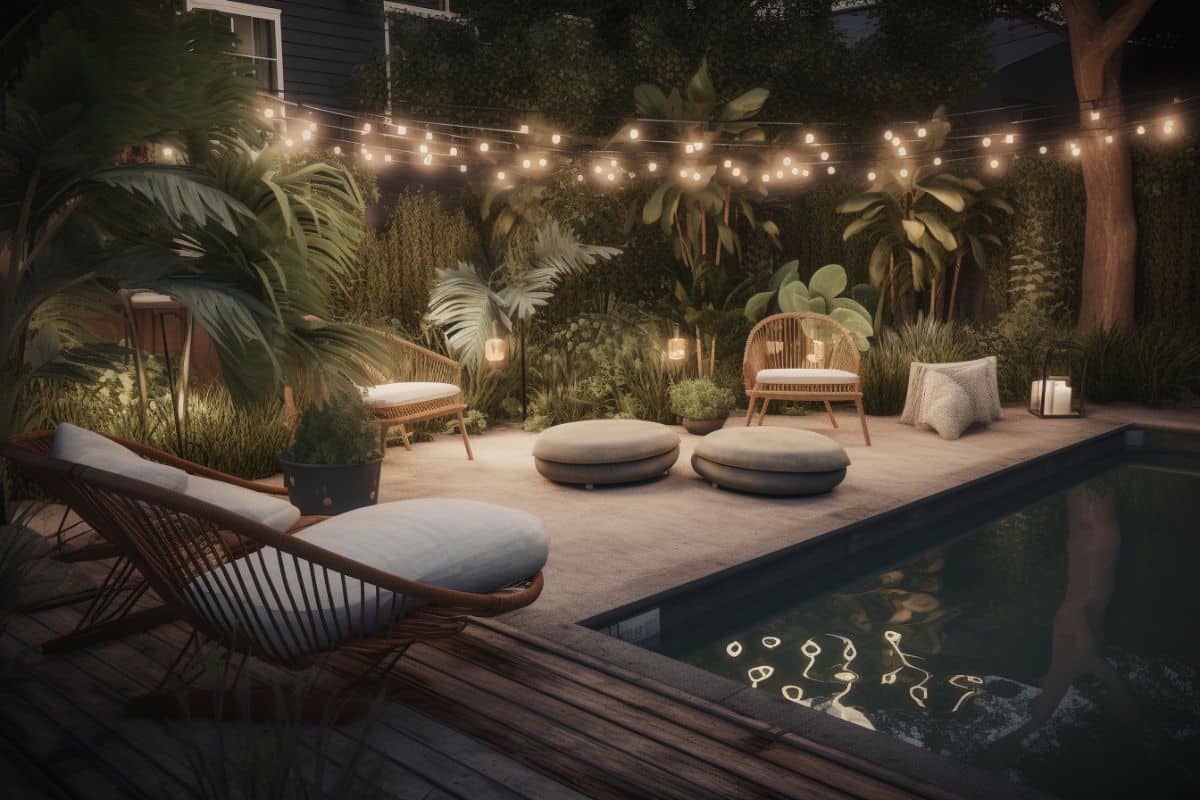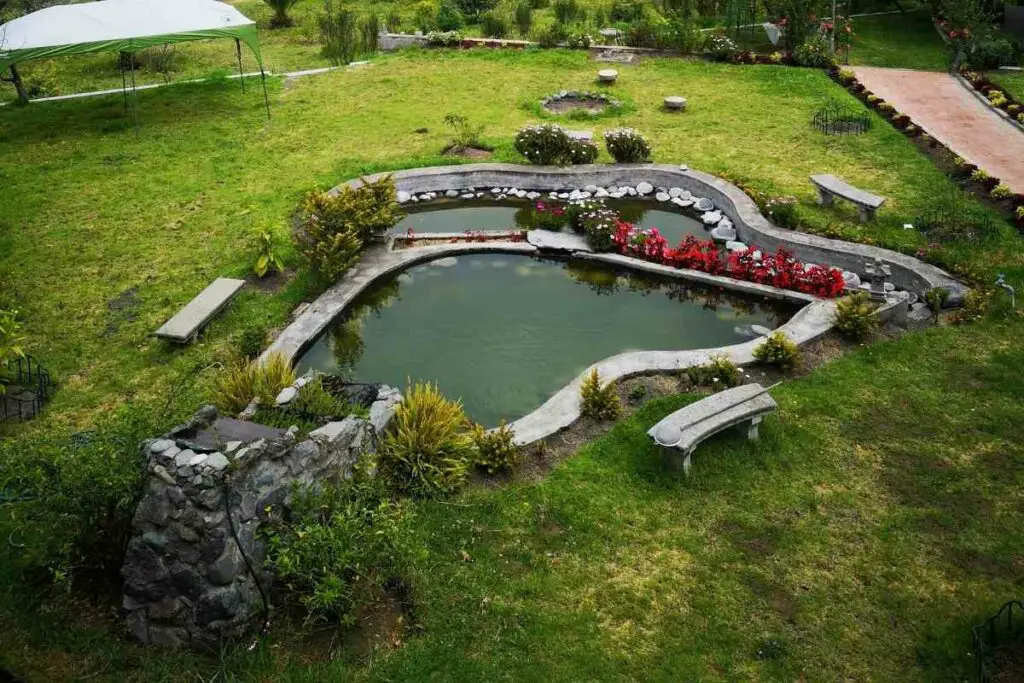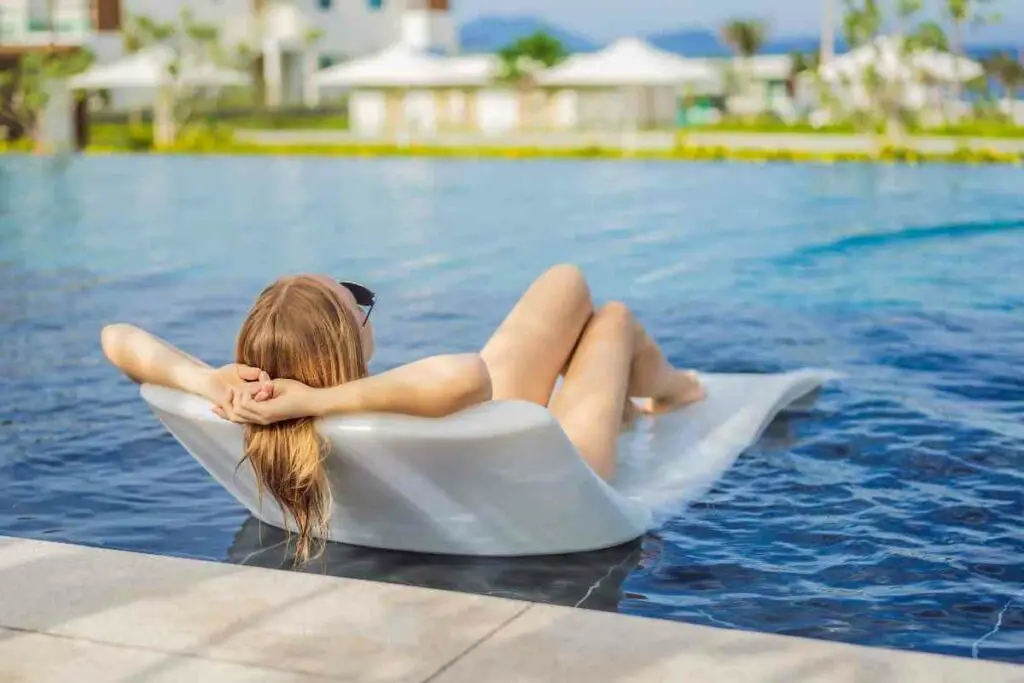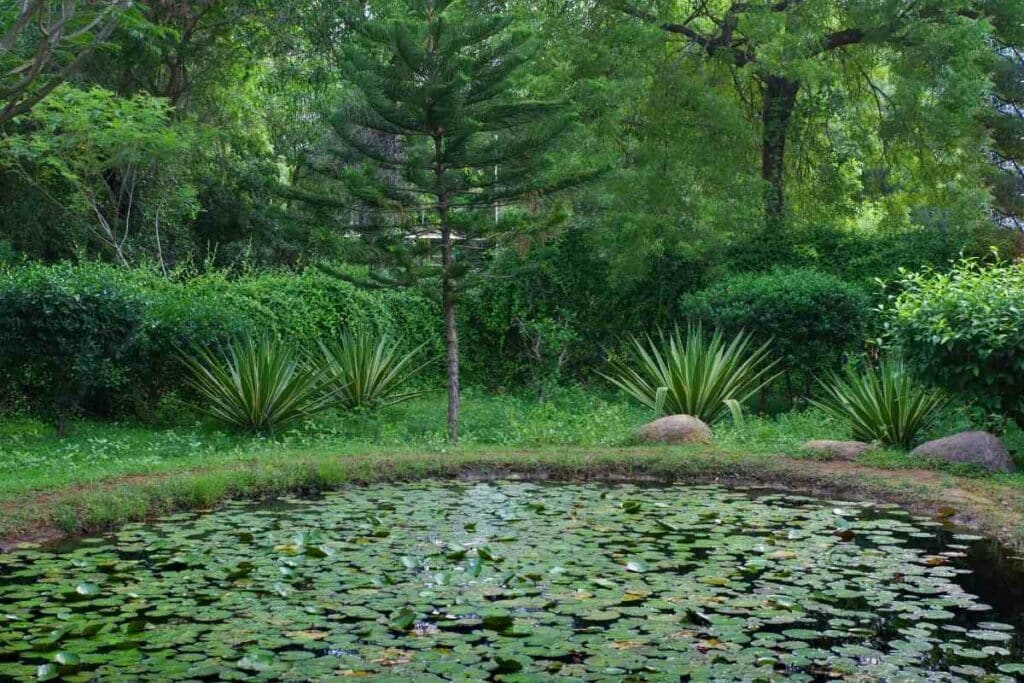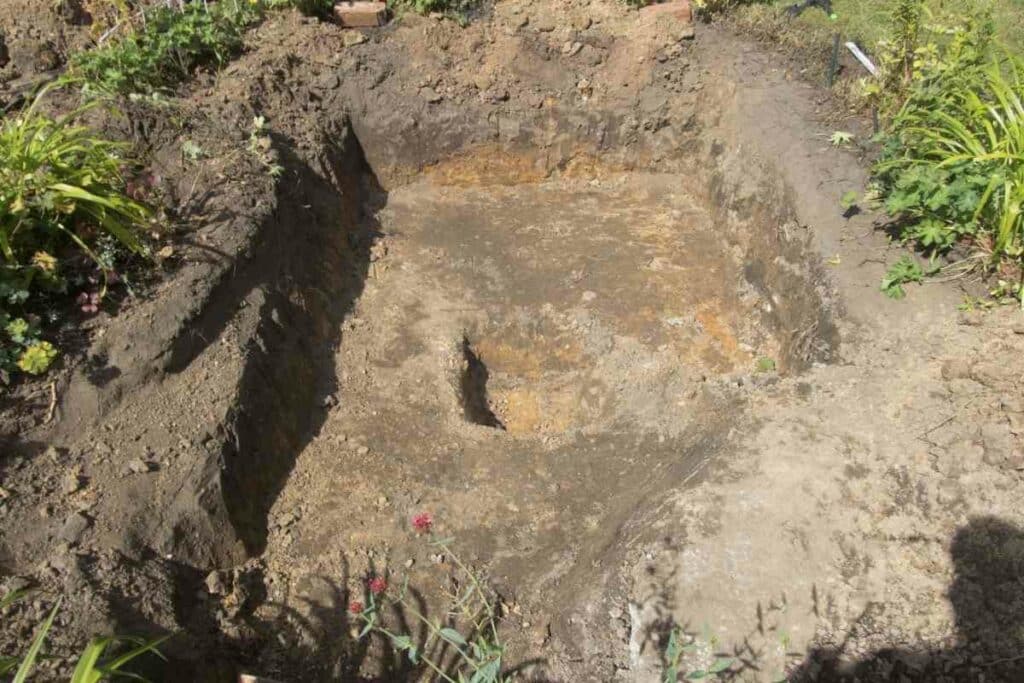If you’re an admirer of frogs and have a pond of your own, you have probably wondered, “how do frogs find ponds?” Well, there are many things that you can do to attract frogs to your pond. For one, your pond must have still water, and secondly, plants aplenty.
This is a good start, but there are many other things you can do to attract frogs as well.
Take a look!
Shade and Shelter
Frogs are nocturnal creatures, and they’re quite sensitive to heat and light.
Alternately, they will be drawn to places that provide natural shade and shelter.
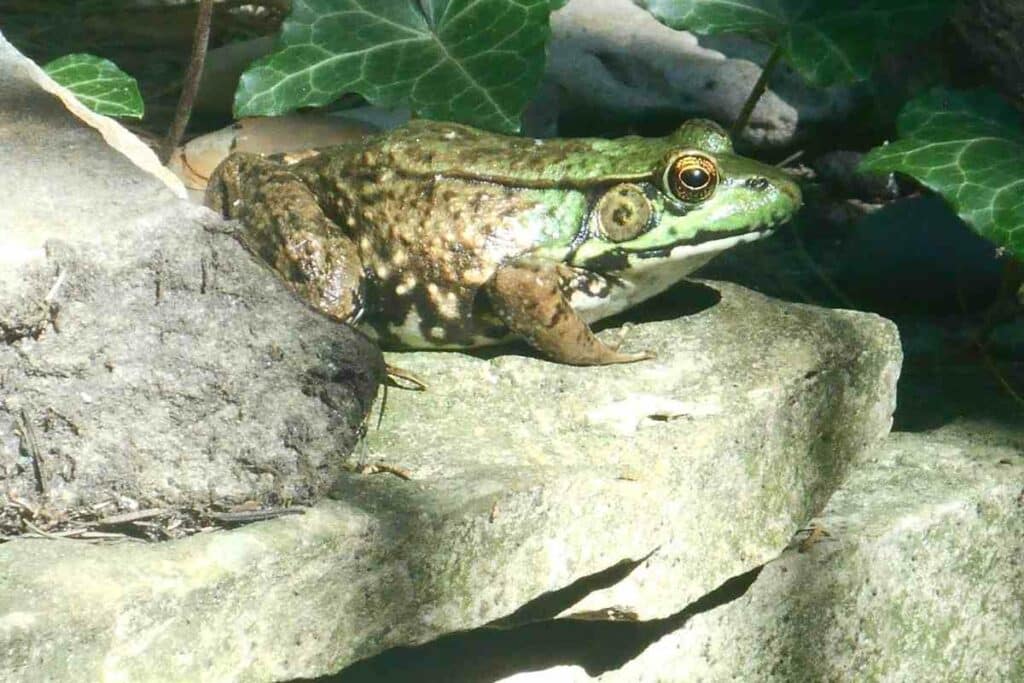
This is key to attracting frogs to your pond, in fact.
So, how can you create shade and shelter?
Certain plants, logs, rocks, any of these things should do the trick!
Still Water
Oftentimes, frogs are visiting ponds in order to breed and lay eggs.
For this reason, they tend to largely prefer still water.
This way, the eggs won’t get sucked away by a current or into a filter, etc.
So, if you don’t mind frogs laying eggs in your pond, and even want to encourage it, go for still water!
This can be provided by avoiding overly powerful pumps, or fountains and waterfalls.
When it comes to helping to attract frogs, this should also do the trick!
Plants (Such As)
While frogs do not eat plants (with their carnivorous, bug-filled diet), they still depend on them for shelter.
A well-planted pond is a key to attracting frogs. Lilies are beautiful, and as they grow on the surface, they provide both shade and shelter!
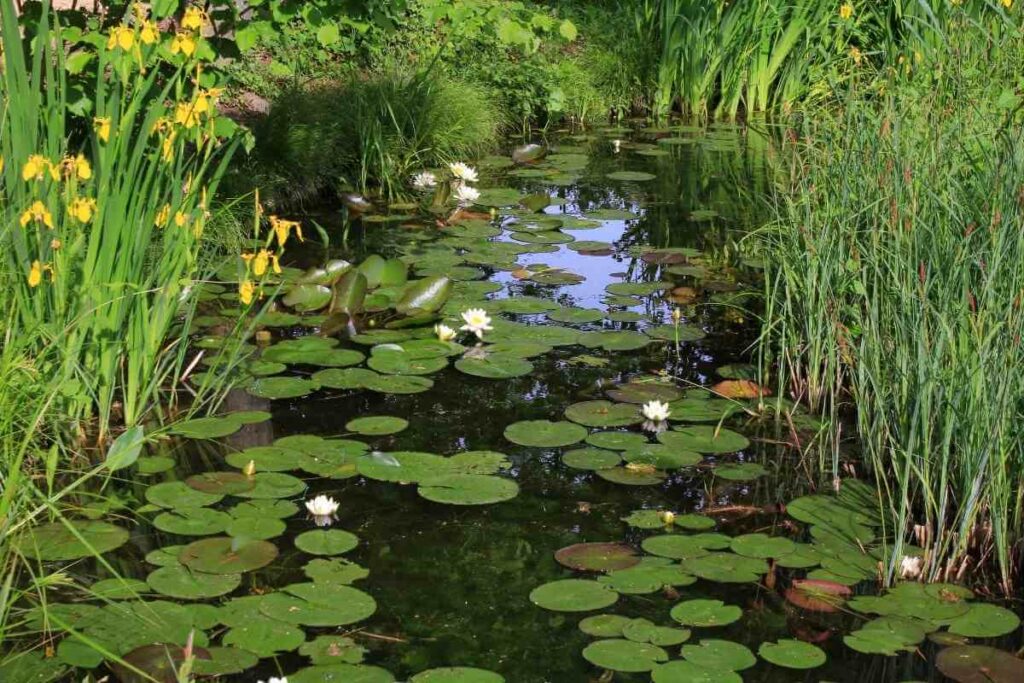
You can also place plants around the edges of the pool, to provide additional shade and shelter (and to attract insects, as touched on below).
Some great options are:
- wildflowers
- ferns
- and hostas
Shrubs and grasses will also provide shade and shelter!
Warm Water
Whole frogs prefer the shade, they can get chilly in water that’s too cold.
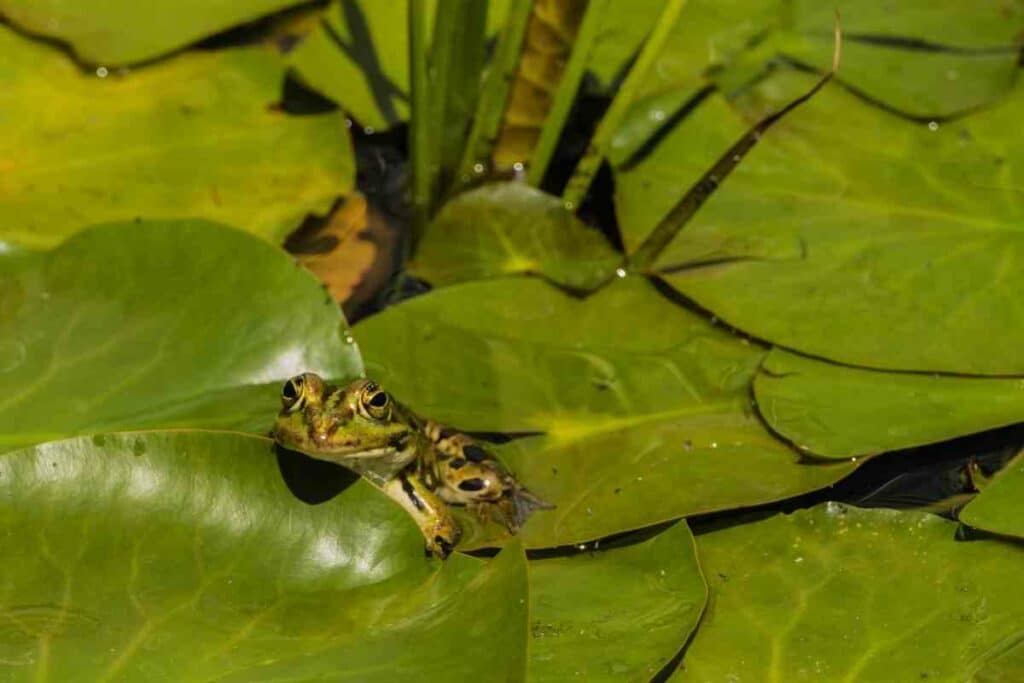
Not only that, but tadpoles find it harder to survive in too-cold water.
The best temperature for frogs and tadpoles is around 65-75 F.
If you can provide a similar temperature, you’re much more likely to see frogs come to visit (and make themselves at home).
Keep Predators Away
Dogs and cats can show a little too much interest in pond life.
They can go for fish, and yes, even tadpoles and frogs.
If frogs feel endangered – or like their young will be endangered – they will not stick around. They will go elsewhere.
Works Best: A good way to keep dogs and cats away is some sort of fence, with holes still big enough for frogs to enter!
Allow Some Algae in Your Pond
If you’re hoping to lure some frogs to your pond, you’ll want to make sure there is algae for them.
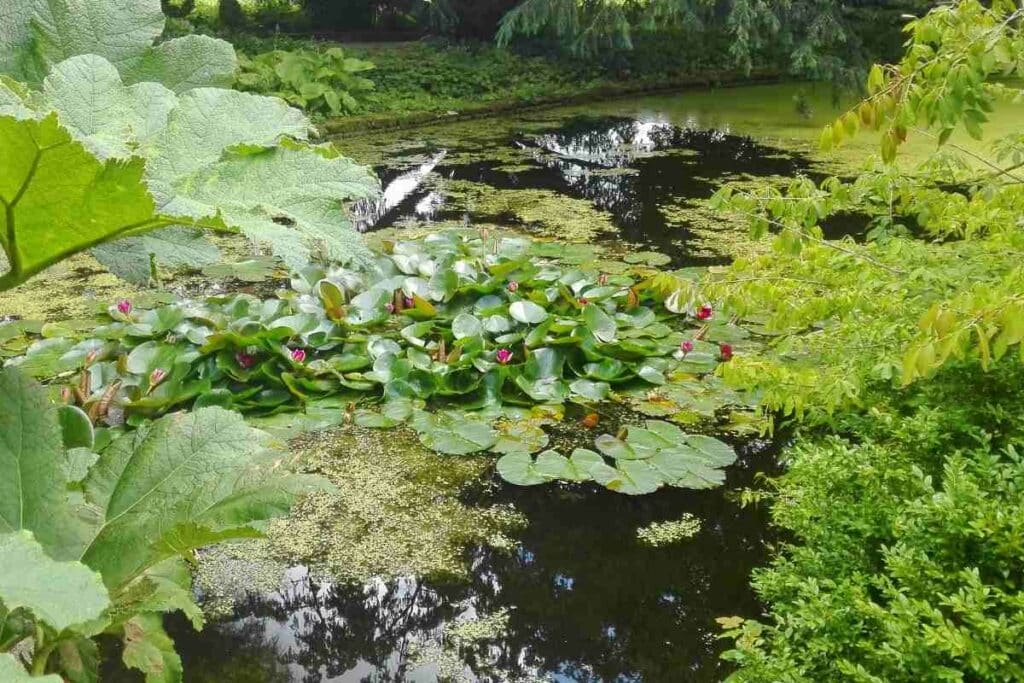
You can ensure this by avoiding over-filtering your pond, so some natural levels of algae will remain.
You will also want to avoid chemicals to decrease algae.
You See: Tadpoles eat algae. It will encourage frogs to stick around if there’s food for their young nearby. The tadpoles will naturally be happy to keep the algae in check!
Provide Shallow Water
Frogs typically prefer shower water.
This is best for a few kinds of pond plants that they love, but it will also make sure that they can get to the surface easier.
Along with this, many insects that frogs eat (such as water beetles and mosquitoes) rely on shallow water.
This is where they reproduce, typically. Areas of just 2-3 centimeters are recommended, although other places can be deeper!
Offer Easy Pond Entry
Did you know that frogs appreciate special ways to enter your pond?
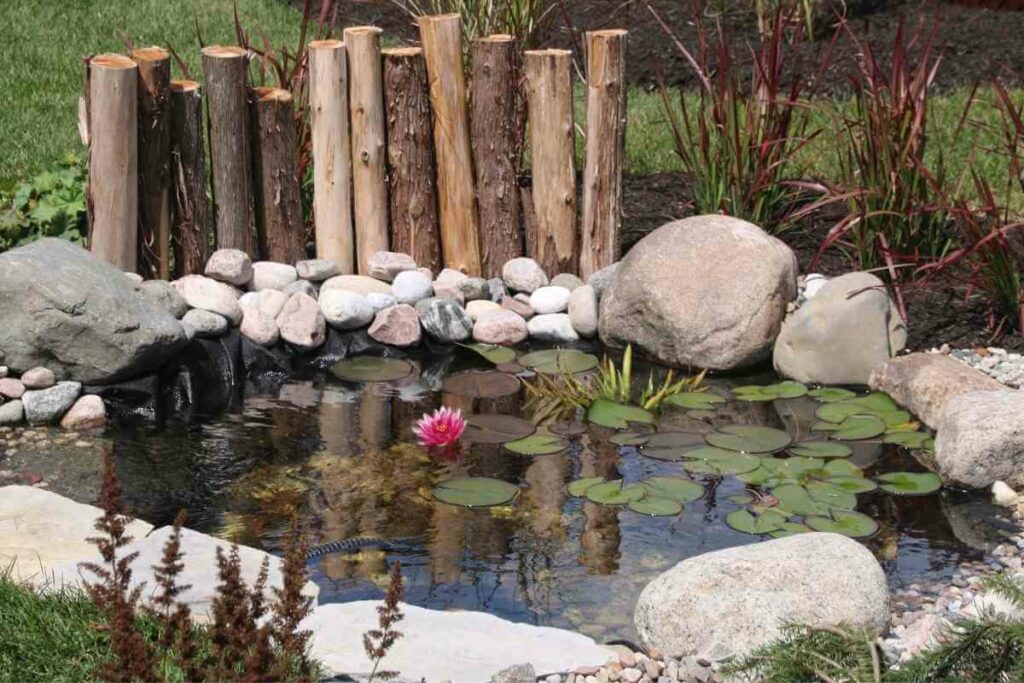
For example, a ramp made from a partially-submerged log or rock. This will ensure that they can easily get in and out of the water, which they will appreciate.
This is also ideal for new, baby frogs that are just learning the ropes.
Other entry ideas include sloping pond edging, and surface-floating plants.
Any of these things should work!
Encourage Insects and Other Frog Food
If you’re really big on the idea of frogs (you’re not the only one), you can always go out of your way to ensure that they have food in and around your pond.
One way is – as touched on above – allowing a certain amount of algae.
Additionally, you can plant things that will attract insects. This is what adult frogs eat, primarily.
Insects that frogs eat include:
- moths
- dragonflies
- mosquitoes
- beetles
- snails
- and worms
Many of the plants mentioned above should do the trick!
Avoid Fish That Are Predatory
Some fish are predatory toward frogs, and bonafide frog-eaters.
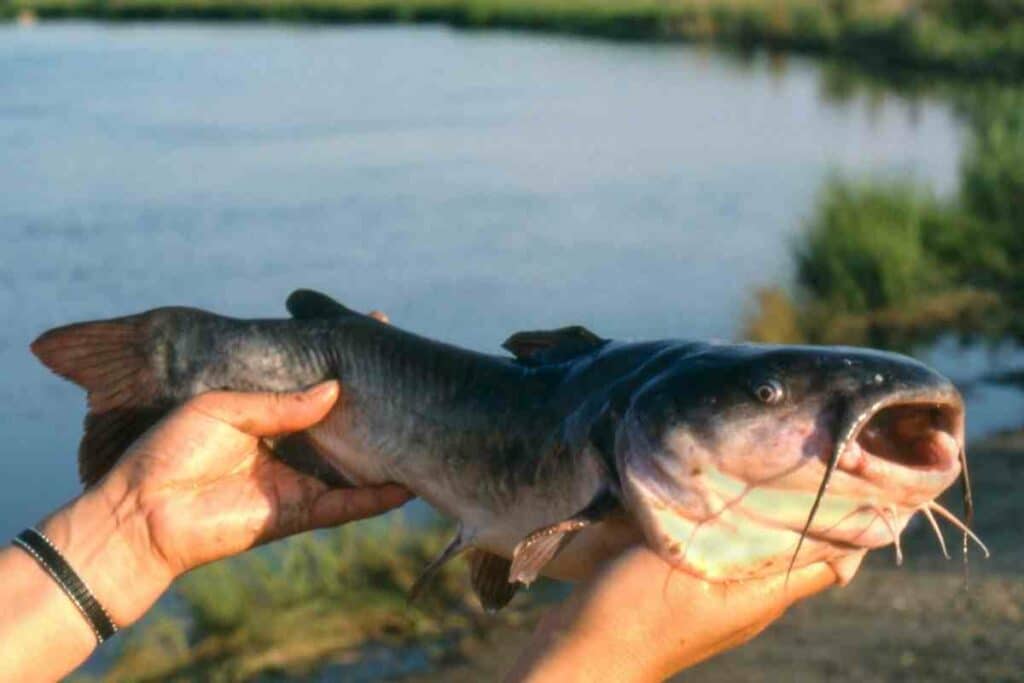
Clearly, if you’re trying to attract ponds, you’ll want to avoid these.
Some of the most enthusiastic frog-eaters include:
- catfish
- largemouth bass
- Northern pike
- and chain pickerel
Better options of fish, ones that can live in harmony with frogs, include Koi Fish and Fancy Goldfish.
Although, these may still occasionally consider a frog for a snack. Usually, they will not, however.
Just make sure that your koi, fancy goldfish, etc. are well-fed on pellets. This will make it less likely for them to consider a frog a snack!
Keep in mind, typically, only 5 or so out of 50 frogs eggs will survive. So, if you see frog eggs being eaten, don’t worry.
This happens pretty much anywhere, and there’s not a lot you can do to protect the eggs.
If you want to decrease how many are being eaten, you can also provide a bit more shelter!
Let Frogs Appear Naturally
Did you know, it’s often illegal to introduce frogs to nature?
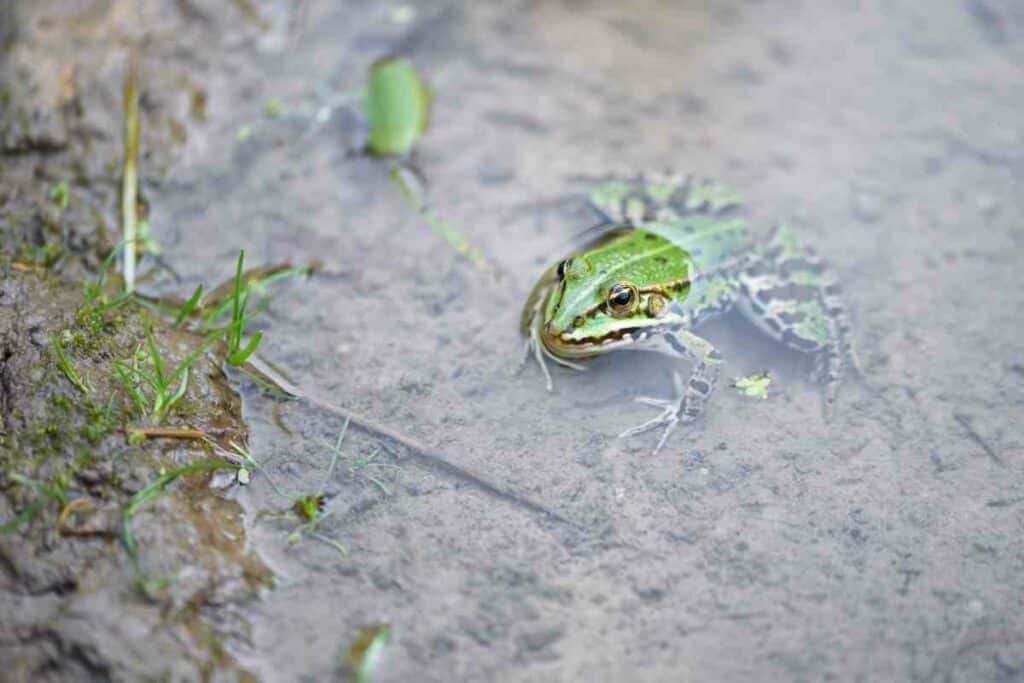
The wrong frog species can all too easily become invasive, which can put the entire nearby ecosystem at risk!
Instead, it’s best to let frogs come to you (for ponds, anyway).
Always Good Idea: If you live somewhere that doesn’t have many frogs naturally, it’s better to purchase a frog or two for an indoor tank (never outdoors). This will ensure that you don’t accidentally put the ecosystem at risk!
Final Thoughts
So, if you were wondering ‘how do frogs find ponds,’ now you know!
Frogs are attracted to well-planted, shady ponds, with still, shallow water.
They also appreciate algae and insects.
Best of luck!
In Case You Missed It
- What Should I Put in the Bottom of My Wildlife Pond?
- Backyard Oasis With Pool: Creating a Relaxing Retreat in Your Backyard
- How to Find Pond Leak (Quick Method to Find the Leaks)
- Pool Ledge Lounger – Complete Buyers Guide
- Do Garden Ponds Overflow When It Rains
- How To Fill A Pond With Water (Complete Guide)

